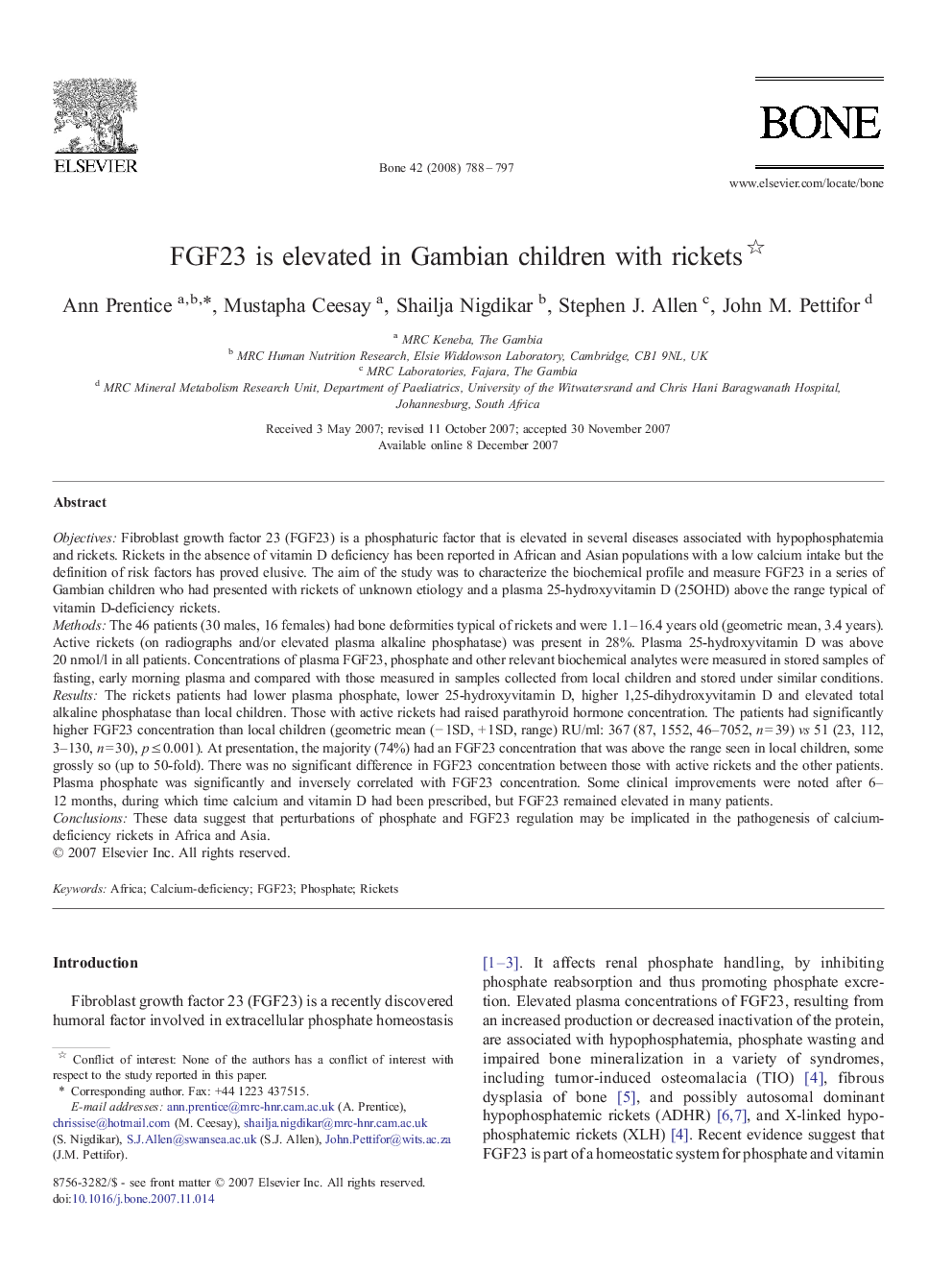| کد مقاله | کد نشریه | سال انتشار | مقاله انگلیسی | نسخه تمام متن |
|---|---|---|---|---|
| 2781678 | 1153331 | 2008 | 10 صفحه PDF | دانلود رایگان |

ObjectivesFibroblast growth factor 23 (FGF23) is a phosphaturic factor that is elevated in several diseases associated with hypophosphatemia and rickets. Rickets in the absence of vitamin D deficiency has been reported in African and Asian populations with a low calcium intake but the definition of risk factors has proved elusive. The aim of the study was to characterize the biochemical profile and measure FGF23 in a series of Gambian children who had presented with rickets of unknown etiology and a plasma 25-hydroxyvitamin D (25OHD) above the range typical of vitamin D-deficiency rickets.MethodsThe 46 patients (30 males, 16 females) had bone deformities typical of rickets and were 1.1–16.4 years old (geometric mean, 3.4 years). Active rickets (on radiographs and/or elevated plasma alkaline phosphatase) was present in 28%. Plasma 25-hydroxyvitamin D was above 20 nmol/l in all patients. Concentrations of plasma FGF23, phosphate and other relevant biochemical analytes were measured in stored samples of fasting, early morning plasma and compared with those measured in samples collected from local children and stored under similar conditions.ResultsThe rickets patients had lower plasma phosphate, lower 25-hydroxyvitamin D, higher 1,25-dihydroxyvitamin D and elevated total alkaline phosphatase than local children. Those with active rickets had raised parathyroid hormone concentration. The patients had significantly higher FGF23 concentration than local children (geometric mean (− 1SD, + 1SD, range) RU/ml: 367 (87, 1552, 46–7052, n = 39) vs 51 (23, 112, 3–130, n = 30), p ≤ 0.001). At presentation, the majority (74%) had an FGF23 concentration that was above the range seen in local children, some grossly so (up to 50-fold). There was no significant difference in FGF23 concentration between those with active rickets and the other patients. Plasma phosphate was significantly and inversely correlated with FGF23 concentration. Some clinical improvements were noted after 6–12 months, during which time calcium and vitamin D had been prescribed, but FGF23 remained elevated in many patients.ConclusionsThese data suggest that perturbations of phosphate and FGF23 regulation may be implicated in the pathogenesis of calcium-deficiency rickets in Africa and Asia.
Journal: Bone - Volume 42, Issue 4, April 2008, Pages 788–797